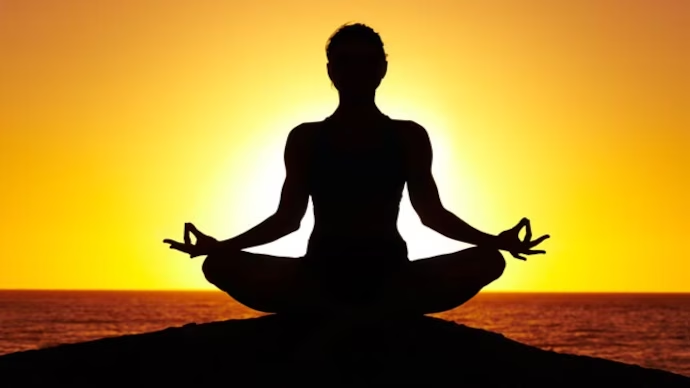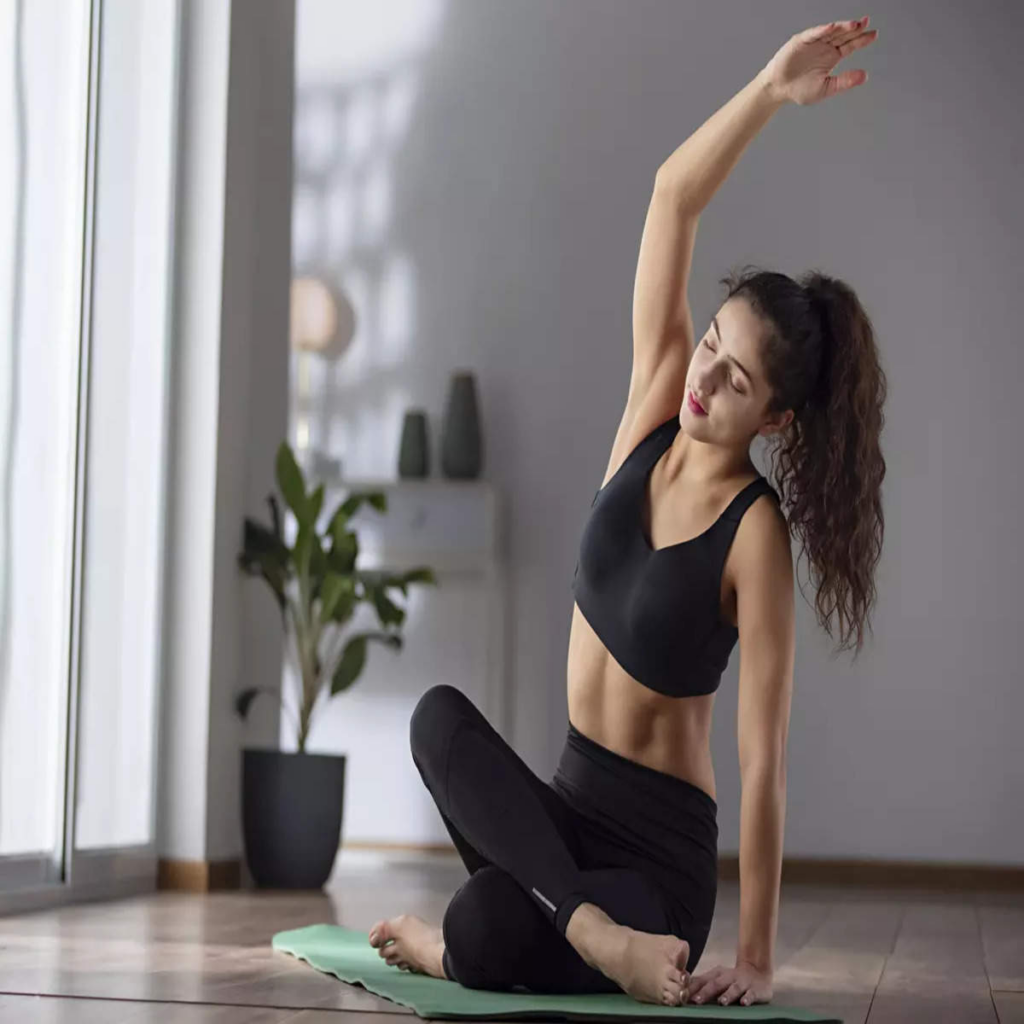
The beginning of a Yoga journey can be both thrilling and terrifying. Different resources, styles, and classes are available for those who are interested in beginning this mind and body practice. Still, many beginners are confused about where they should start this healing practice. Go through this blog post to get important pointers on how to lay the foundation of your journey and maintain it in future.
Which is the best Yoga for beginners?
Hatha Yoga is often considered the best for beginners due to its slow pace, focus on basic postures, and emphasis on breath control and alignment.
For beginners, Hatha yoga offers a great starting point. This style concentrates on basic poses and breathing exercises, enabling one to grasp the basics at a slower pace. The poses in Hatha classes are usually held for some time, allowing one to understand correct alignment and build strength.
Vinyasa, otherwise known as flow yoga, is another popular option among novices. By joining breath with movement, this type of exercise creates dynamic and fluid practices that help learners improve their flexibility. While it may be more difficult than Hatha, many studios offer beginner-friendly Vinyasa classes that introduce basic sequences and modifications.
If you are detail-oriented and prefer precise alignment, then Iyengar yoga may suit you best. It often stresses how the right posture ought to be maintained by using props such as blocks, straps, or blankets.
What is the easiest Yoga to start with?
The easiest yoga to start with is Hatha Yoga, as it offers a gentle introduction to basic postures, breathing techniques, and foundational practices for beginners.
Restorative yoga is the simplest way of getting started because it involves gentle, relaxing postures that are held for longer periods, sometimes supported by props such as blankets or bolsters.
This kind of practice focuses on deep relaxation, enabling stress relief while promoting mindful breathing, making it perfect for beginners. It does not require much physical effort, thereby enabling newbies to embrace its principles slowly at a calm, relaxed pace that has minimal impact. It promotes general well-being and positive initiation into yogic life.
How To Identify an Appropriate Learning Environment?
Identify an appropriate yoga learning environment by ensuring it’s welcoming, supportive, well-ventilated, and led by qualified instructors, with suitable classes for your skill level and goals.
A dedicated yoga studio is one of the most comprehensive places to learn for beginners. They usually offer multiple classes that cater to different skill levels and types, allowing you to experiment and discover what is best suited for you.
Many fitness centers now have included yoga classes in their timetables. Though they may not be as focused as those in studios, these can still provide a convenient and affordable way for you to start your practice.
Numerous online platforms have sprung up, offering mind and body practice lessons suitable for all levels in this era of digitalization. They are good options for starters who prefer home-based exercises or are too busy to visit studios. Always look for reputable platforms with certified instructors and beginner-friendly content.
For those who prefer individual attention or have specific concerns, it may be worth considering booking private lessons with a qualified yogi. By focusing on a single person, this method of instruction helps guide his progress at a more rapid pace than other approaches would.
What should a beginner wear to yoga?
A beginner should wear comfortable, breathable clothing that allows for ease of movement, such as moisture-wicking yoga pants, a fitted top, and supportive footwear if needed.
For those who are just starting out, comfortable clothes that allow free movements will do. So go for the moisture-wicking fabrics which draw sweat away from your body. This way you will prevent it from hindering your session. The instructors can see better how your body is aligned in fitting tops and bottoms.
Never wear something loose that might distract you. It is advised to go barefoot for better grip on the mat and stability during practice. However, where necessary, one may have to use a lightweight, flexible sports bra as an alternative for support reasons. Lastly, don’t forget about bringing a water bottle.
What Are The Key Yoga Poses for Beginners?

Key yoga poses for beginners include Mountain Pose, Downward Dog, Child’s Pose, Warrior I, Warrior II, Tree Pose, and Cat-Cow, focusing on foundational alignment and balance.
Mountain Pose (Tadasana) teaches correct alignment and body awareness; it forms the foundation of many other postures in this practice.
Child’s Pose (Balasana) is a restful pose that stretches the back and hips while promoting relaxation. Great pose to return to when you need a break during practice.
Downward-Facing Dog (Adho Mukha Svanasana) strengthens arms and legs while stretching the whole back side of the body.
Cat-Cow Pose (Marjaryasana-Bitilasana) is a gentle up-and-down movement between two poses that helps warm up your spine and increases its flexibility.
Warrior I and II (Virabhadrasana I & II) builds strength through the leg muscles and core while also enhancing balance and concentration.
How often should beginners do yoga in a week?
Beginners should aim to practice yoga 2-3 times a week to build strength and flexibility gradually, with consistency being more important than frequency.
A newbie should try doing it 2-3 times every week so that they can establish a proper routine without putting too much pressure on their body and giving muscles a recovery period while allowing adaptation. It will help the growth of flexibility, strength, and mindfulness. As one settles into a comfort zone, one can increase frequency slowly if necessary. Always listen to your body and adjust as needed to prevent injury.
Can you lose weight with beginner yoga?

Yes, beginner yoga can aid weight loss by increasing physical activity, improving metabolism, and promoting mindfulness, though combining it with a balanced diet enhances results.
Starting this mind and body practice as a beginner can help you lose weight, especially when you have a balanced diet and healthy lifestyle. Slow Vinyasa or Hatha yoga styles boost metabolism, enhance muscle tone, and alleviate stress, thereby helping with weight loss.
It is not that it will burn calories like high-intensity workouts do but its focus on mindfulness can support healthy eating habits and overall wellness leading to losing pounds and keeping them off in the long run.
What Are Common Challenges of Beginners in Yoga?
Common challenges for beginners in yoga include difficulty with flexibility, balance, mastering poses, managing breath control, and maintaining focus or consistency in practice.
Remember that flexibility gets better with time. Employ props and adjustments while monitoring your growth rather than comparing yourself to others.
For newbies, balance poses may create some challenges in their practices. Do these close to a wall for support as the practice will increase awareness of one’s body, leading to more consistent balance over time.
It is common for people to feel self-conscious when attending classes at this level. Remember that everyone has gone through this stage before, so most practitioners are concerned about improving their skills.
During exercises, you may find it difficult to concentrate. Gently draw your mind back into breathing once it starts wondering about other things it happens.
Conclusion
Commencing yoga as an amateur means embarking on an exciting journey where one discovers themselves better while growing at the same time. Choose an appropriate style, identify the right learning atmosphere, and develop a strong foundation if you want an enjoyable long-lasting experience. Be patient with yourself enough, listen to what your body tells you and have fun while learning.

